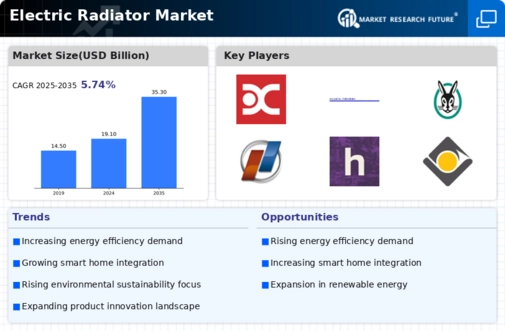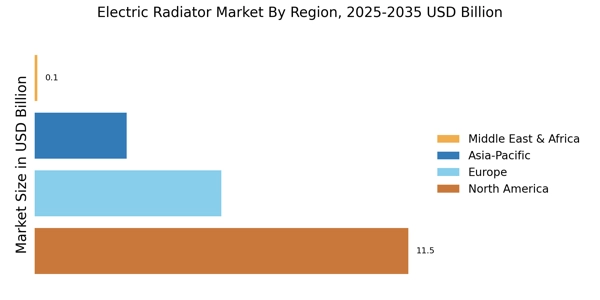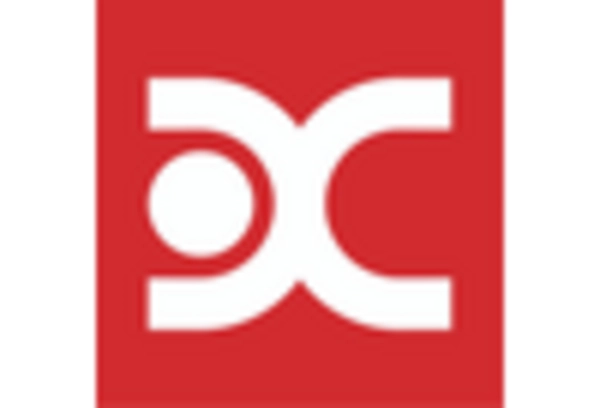Regulatory Support for Clean Energy
Government regulations promoting clean energy and reducing carbon emissions are significantly influencing the Electric Radiator Market. Many countries are implementing policies that encourage the adoption of electric heating solutions, which are often seen as cleaner alternatives to fossil fuel-based systems. For instance, incentives for renewable energy use and stricter emissions standards are likely to propel the demand for electric radiators. The market is projected to grow as these regulations create a favorable environment for electric heating technologies, aligning with global sustainability goals and enhancing the appeal of electric radiators.
Rising Demand for Energy Efficiency
The Electric Radiator Market is experiencing a notable increase in demand for energy-efficient heating solutions. As consumers become more environmentally conscious, they seek products that minimize energy consumption while providing effective heating. Electric radiators, known for their efficiency, are gaining traction as they convert nearly all the electricity they consume into heat. According to recent data, energy-efficient heating solutions can reduce energy costs by up to 30% compared to traditional heating methods. This shift towards energy efficiency is likely to drive growth in the Electric Radiator Market, as manufacturers innovate to meet these consumer preferences.
Expansion of Smart Home Technologies
The rise of smart home technologies is significantly influencing the Electric Radiator Market. As more households adopt smart home systems, the integration of electric radiators into these ecosystems becomes increasingly appealing. Consumers are drawn to the convenience of controlling their heating systems through mobile applications and voice-activated devices. This trend not only enhances user experience but also promotes energy efficiency by allowing for precise temperature control. The Electric Radiator Market is poised for growth as manufacturers develop products that seamlessly integrate with smart home technologies, catering to the demands of modern consumers.
Increased Awareness of Indoor Air Quality
The Electric Radiator Market is benefiting from a growing awareness of indoor air quality and its impact on health. Traditional heating systems can circulate dust and allergens, whereas electric radiators typically do not rely on combustion, thus reducing the risk of indoor air pollution. As consumers prioritize healthier living environments, the demand for electric heating solutions that promote better air quality is likely to rise. This trend is expected to drive the Electric Radiator Market, as more individuals seek to improve their home environments through cleaner heating options.
Technological Innovations in Heating Solutions
Technological advancements are reshaping the Electric Radiator Market, leading to the development of smarter and more efficient heating solutions. Innovations such as smart thermostats, Wi-Fi connectivity, and advanced heating elements are enhancing user experience and energy management. These technologies allow consumers to control their heating systems remotely, optimizing energy use and comfort. The integration of smart technology is expected to attract tech-savvy consumers, further driving market growth. As manufacturers continue to invest in research and development, the Electric Radiator Market is likely to witness a surge in innovative products that cater to evolving consumer needs.


















Leave a Comment